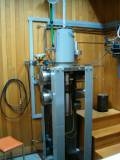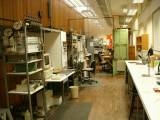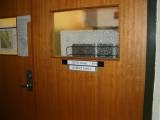Today I had my first real hands on approach on the experimental work I’ll be doing this year. I cold pressed synthetic iron bearing olivine powder into 5 pellets for sintering in the oven at 1400C overnight so that they become one sample of about 3cm long. On wednesday I will be hot pressing that in other machine to create the final sample which I will be doing preliminary experments on in the wave attenuation machine at pressures up to 200MPa and temps of 1300C.
The last few weeks I have familiarised myself with the various machines i’ll be using. I have witnessed the whole procedure of reassembling the attenuation machine and it’s usage for calibration and proper alignment of the capacitor plates that determine the amount of torsion is produced in the machine by two bottom driver coils. This torsion can be linked to the amount of strain that is produced by shearing the sample in relation to an elastic standard of which the shear modulus and the internal friction 1/Q are known. The tangent of the phase angle that is made with the elastic standard and the sample gives the internal friction of the sample. Likewise the shear modulus can be calculated from two-way wave speeds at different frequencies through the sample (and elastic standard). These values and especially 1/Q, which denotes the wave attenuation in the sample are useful in this experimental project. Ultimately, I will have various samples, pre-deformed with varying dislocation densities (or crystal defects) as sythetic polycrystalline ‘upper mantle material’ and possibly olivine single crystals. These will show different responses to seismic wave attenuation and my goal is to find out to what degree and quantify this relationship and model it for tomographic upper mantle imaging.
This project falls into place in a bigger picture where seismic wave speeds are not only thought to attenuate by dislocation densities but also by:
-Frequency
-Temperature
-Grain size
-Melt fraction
-Chemical composition
-water (<- still needs to be investigated)
The importance of this endeavor lies in the still unresolved phenomenon of the low wavespeed zone in the upper mantle. Whereas previously it has been thought to be caused by widespread melting, it may now seem that dislocations play a large role in dampening the seismic waves instead.
Here are some laboratory pics:
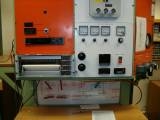 Green machine for hot pressing
Green machine for hot pressing
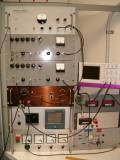 Interface for the attenuation machine
Interface for the attenuation machine
 My workspace (im getting a new desk soonish)
My workspace (im getting a new desk soonish)
 Entrance to main building RSES
Entrance to main building RSES
More photos: here

